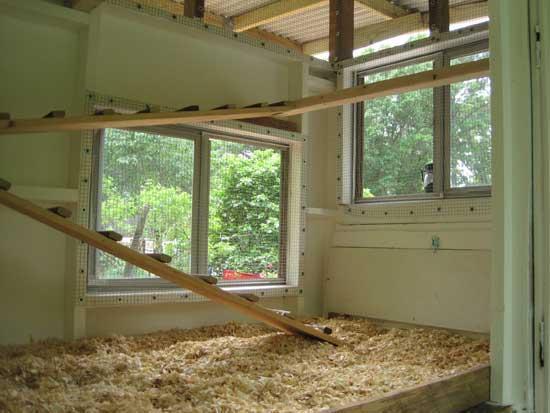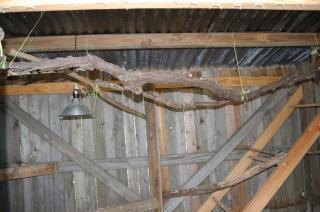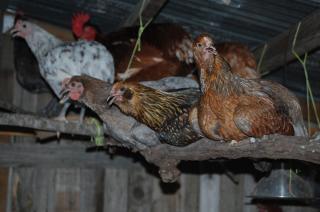I recommend a minimim of 8" and preferably closer to 12" roost length per full sized chicken. It is not that they take up that much space when roosting, but they need the extra space to get on, since they spread their wings even when jumping short distances. Prime roosting space is determined by their position in the pecking order and they go through quite a few gymnastics getting it right most nights. Also, some chickens, usually hens, sometimes get pretty vicious with lower ranking chickens and will peck the heck out of them when they are settling in. The lower ranking ones need room to move away from the vicious ones or they will find other places to sleep, like in the nesting boxes. I find that extra space on the roosts is a good thing.
I use tree branches smaller than the ones Pat recommends and mine are fine with that. Of course, it does not get all that cold here in Arlansas. We only had a few nights where it got below zero degrees Fahrenheit. In a well ventilate draft-free coop that is not all that cold.
My tree branches look a lot like 2txmedics' roosts. They are not all the same thickness not are they all that level. I've tried turning them around to see what effect that has on them roosting. When I do that, I leave them in the new positions for several weeks so they can get used to the change. Some do change roosting places when I do that and some don't. The position in front of the window seems to remain the prime spot. I've also tried putting some boards up there to see what difference that makes. Not a lot. Even if the board is a couple of inches higher, mine stay on the tree branches. I think that is mainly because that is what they are used to. The young, immature, lower-in-the-pecking-order ones will occasionally use the boards, but not always.
My conclusion from all this is that we tend to obsess over this issue more than the chickens do.
I'm not going to argue against using the flat side of the 2x4 to help cover their feet in cold weather. There may be some benefit to that. If you do use boards, round off the corners to make it easier on their feet when they wrap around and sand them to remove any splinters that could lead to bumblefoot.
I also strongly recommend you look at the articles at the bottom of Pat's post. I think they should be required reading for anyone building a coop and run.
Good luck!






